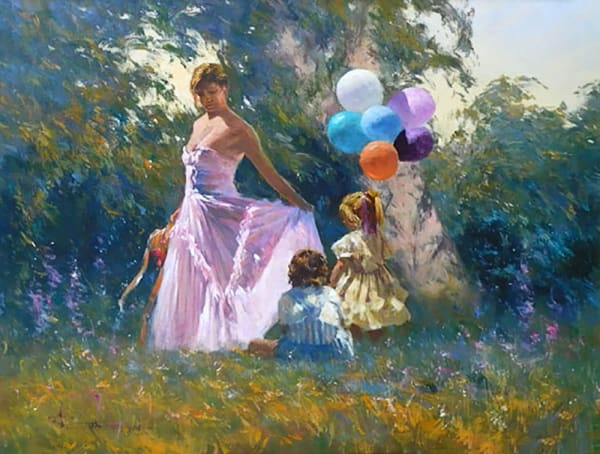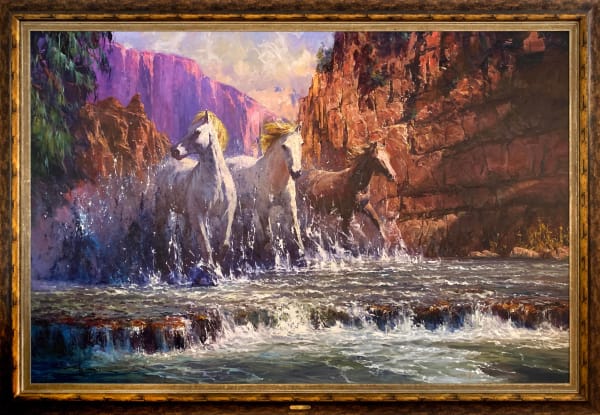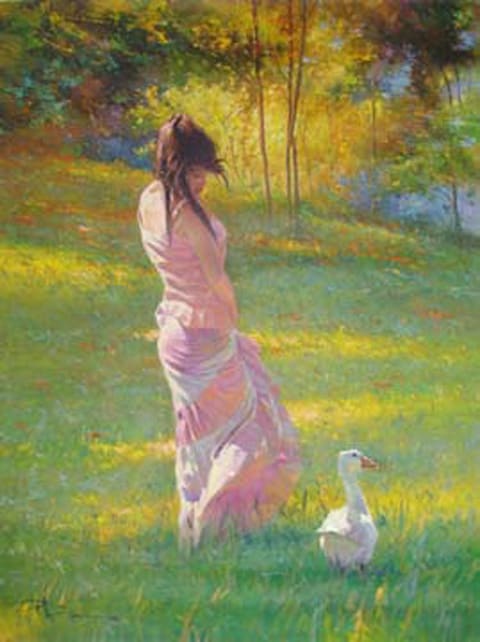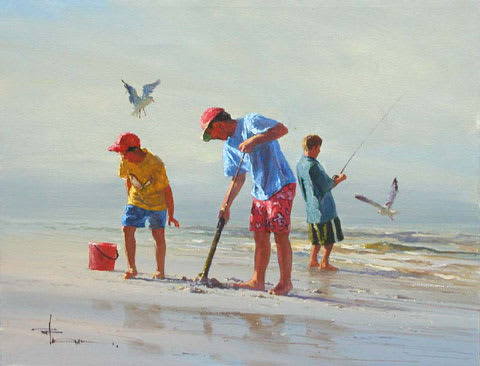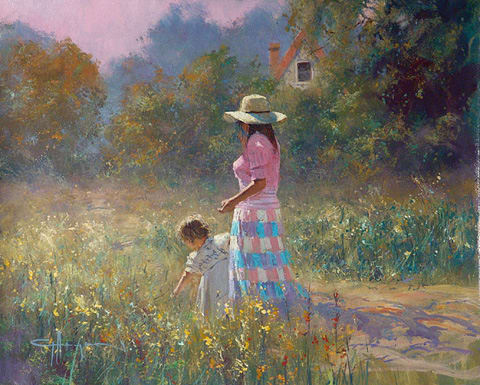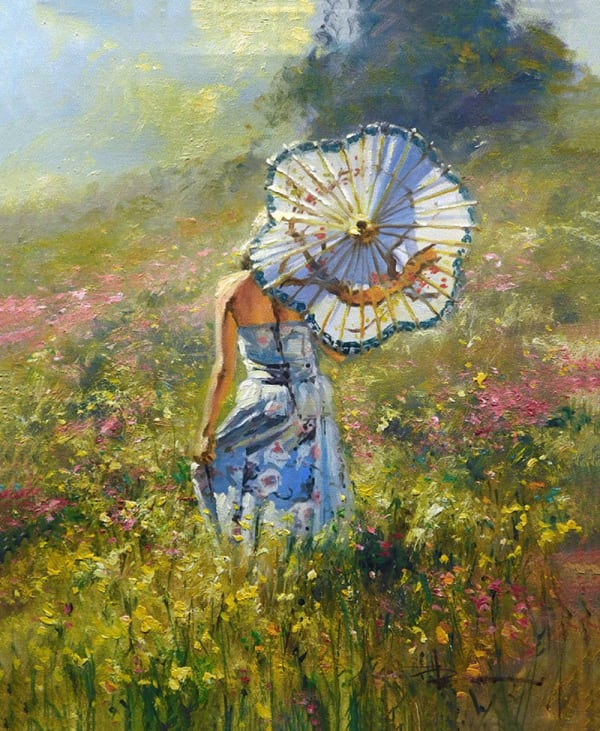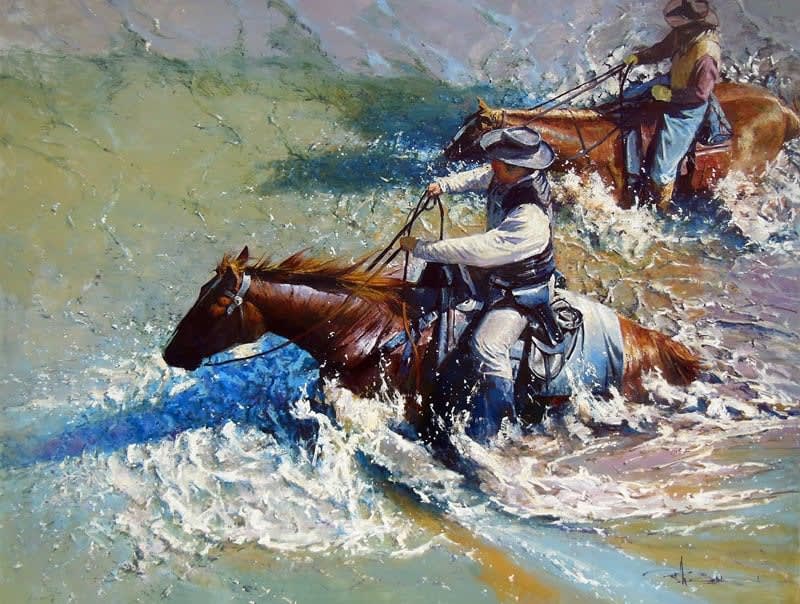Robert Hagan
Robert Hagan is an Australian painter, author, television personality and producer. He is best known for his Impressionist oils and for hosting a travel and painting series on Discovery HD television.
Hagan was born in Murwillumbah, New South Wales, Australia and spent his youth in and about the beautiful Tweed Valley. He graduated from university with an Arts degree in Economics and a Diploma in Education, then taught high school. He began painting as a hobby, but soon realized he wanted a career as an artist.
Hagan took a year away from teaching to paint, but felt he was unable to master the art to his own satisfaction. He returned to the classroom for a bit, but knew he had to pursue his art, and resigned from teaching to do that.
From age 28 to 31, Hagan taught himself to paint. ‘It was the most frustrating period ever,’ he said. ‘I had no clue what I was doing and stubbornly sought no help whatsoever from anyone other than the deceased greats of the past. My big breakthrough came on Freshwater Beach where I stood in anger after three years without progress and made the simple observation that learning starts with the first step and not the 50th! Nature is expressed in its simplest form at the seaside – sky, water and beach and, I worked out, just three colors are needed to replicate it! Just three.’
Hagan spent the next year wandering and painting. He sold his first piece – a beach scene – at a charity art show for $150 and never looked back. He went on to paint around the world, having studios in England, the USA, Australia and Thailand.
As his career expanded, so did his subject matter. He painted the America’s Cup battle off Freemantle, plunged into thoroughbred horse racing, and fell in love with the American West and its legendary cowboys.
Hagan's approach to painting is to translate scenes of everyday life into romantic, nostalgic and blissfully peaceful visions of the world. His style is Impressionist using a limited palette of oil to impart a sense of tranquility and play on light to make the painting come alive.
Although Hagan paints varied subjects – landscapes, seascapes, western, portraits and figurative – he insists that his paintings here and there go beyond obvious recognizable subjects. It’s better, he says, ‘to make a painting like the recognizable subject rather than executing a literal representation. It's better to paint the effect of what is there . . . what is left in the back of the head! That's impressionism, and that I hope is where I am.’
